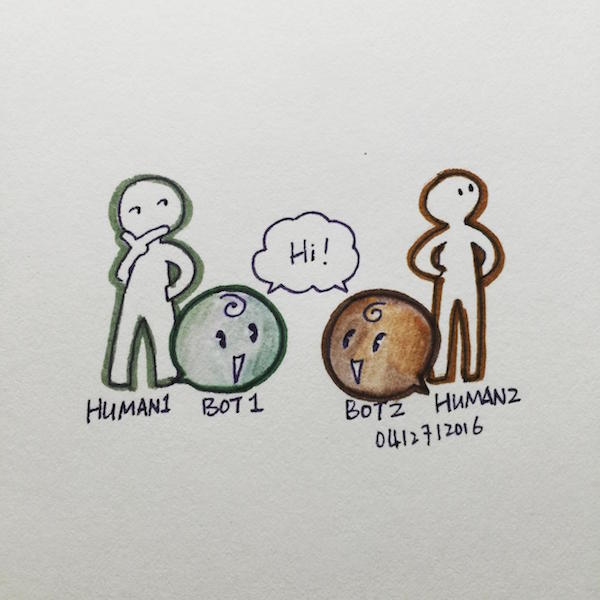
Chat bots apparently have become the new hype and so is the conversation-based interface (think send a Facebook Messenger).
I went to a meetup hosted by Products That Count and Venture Capitalist Tim Chang to get a general idea about this trend. Generally, there can be four types of conversation interface based “tools”: traditional messaging; chatbots (ask them questions, they can reply or return results, e.g. Sephora / H&M on Kik app); natural language processing based tools (e.g. IBM Watson), machine learning and deep learning and requires some training work; and the “Centaur” — AI + human.
The WeChat app is a good example for chat interface — a single app that encapsulates an entire ecosystem from chatting with friends to buying movie tickets to making bank transactions, allowing people to chat as well as complete tasks.
A conversation base interface has its advantages: it identifies who you are, log every single message and transaction (if there’s any), and as tech develops it may figure out what you need based on your previous inputs. The downside is whether people will be willing to accomplish tasks by chatting back and forth, or simply click a few buttons like it’s now in an app. When is best to use conversation-based interface and what will be new in the user experience are up to the context and needs further experiments.
There will be other opportunities and challenges around conversation based tools, like analytics, storage, security and privacy issues, how AI-based tools scale, and where it can helps enterprises revamp workflows. There may be other interesting user scenarios, like personal coaching tool, AI service partnerships and becoming AI trainers.
In the future, would humans still be players in conversations? Or just AI-based bots? Would be interesting to see.